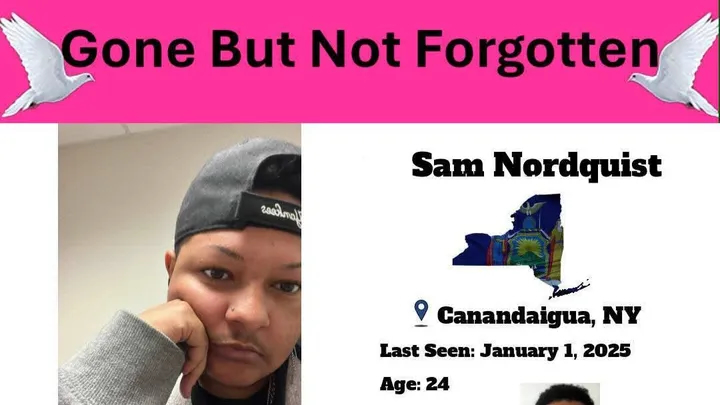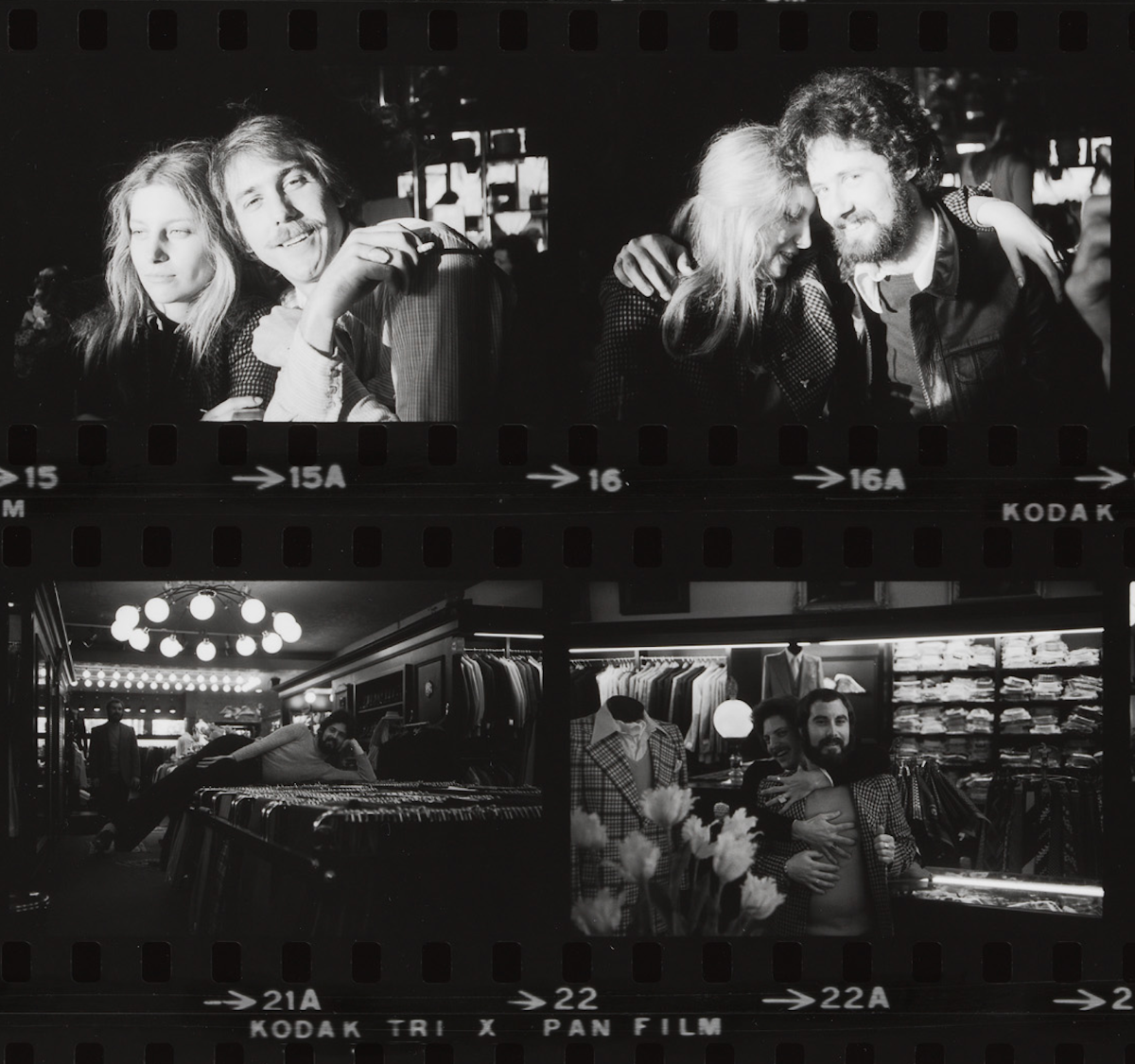On Feb. 13, Sam Nordquist, a Black trans man from Minnesota, was found murdered in a field in upstate New York. He was 24 years old. The ongoing investigation suggests that Nordquist was subjected to prolonged physical and psychological torture for over a month before he was murdered. "No human being should have to endure what Sam endured," Major Kevin Sucher, commander of the state police troop in the region, said during a news conference. The New York State Police has charged seven people with murder.
The majority of the media appears to value Nordquist as a lurid true crime story rather than as a person. Nordquist's death has been widely reported on, with outlets tending to focus on the grisly details of his torture and death that have since emerged in court documents, all of which misgender Nordquist. Only a few queer outlets, such as Autostraddle, have attempted to paint a fuller picture of who Nordquist was as a person—how he spent his days (working at a group home for disabled adults), what he loved (nature, video games, TikTok, Puma sweatshirts, and cooking), and who loved him (his coworkers, his family, his friends, and his two adopted cats, Pumpkin and Storm).
The cops have handled the task of investigating the murder of a trans man exactly as you might expect they would. The New York State Police's missing person notice about Sam included his dead name and conspicuously avoided using any pronouns. Under "description," the release states Sam's sex assigned at birth. The photo of Sam that the police selected for the missing person notice—the image of Sam that has circulated most widely online—is, at first, a baffling choice. It is an old photo of Sam, his face young and smooth, taken before he got top surgery and started HRT, and as such makes for a jarring contrast with photos more recently circulated from Sam's private social media. If you are searching for a missing person, it seems baffling to choose a photo that simply does not represent how that person looks now. But of course the choice is not baffling; it is intentionally, abjectly cruel. It is just what it looks like.
The media, for its part, has proved that misgendering is not the only way to take away Nordquist's manhood, or even his humanity, after death. The initial headline of the New York Times story on Nordquist read "Trans Man Killed in New York Was Tortured for Two Months, Police Say." The headline was soon edited online to simply read "Man," and then finally "Person." These edits are especially chilling amid the Trump administration's campaign to scrub the word "transgender" from federal sites, as a part of their larger goal to erase trans people from public life. Even more ghoulishly, the Times' subheadline was changed from referring to Nordquist's "body" to his "remains." This change feels most haunting to me, and like the result not of the downstream pressure of some executive order but simply a preference of style. Who gets to be a body, and who is relegated to remains?
Obviously, no one should turn to the Times for humanizing coverage of trans people. But perhaps the most enraging part of the coverage occurred on Feb. 16, two days after Nordquist's murder, when the police ruled they had found no evidence of a hate crime. Outlets like the Times, the AP, and the Guardian published that update uncritically, attributing the ruling to the prosecutors but not questioning it. On Feb. 16, the Ontario County District Attorney’s Office and state police released a statement:
There have been many questions as to whether Sam’s murder was a hate crime. A "hate crime" in New York is defined in Penal Law Sect. 485.05, as an offense committed "in whole or insubstantial part because of a belief or perception regarding the race, color, national origin, ancestry, gender, gender identity or expression, religion, religious practice, age, disability or sexual orientation of a person, regardless of whether the belief or perception is correct." We are still in the early stages of this investigation. While significant evidence has been obtained, we are continuing to follow up on leads brought to the State Police. We urge the community not to speculate on the motive behind the murder as we work to find justice for Sam. At this time we have no indication that Sam’s murder was a hate crime. To help alleviate the understandable concern his murder could be a hate crime, we are disclosing that Sam and his assailants were known to each other, identified as LGBTQ+, and at least one of the defendants lived with Sam in the time period leading up to the instant offense…”
The presumption here—that Nordquist's death should not be ruled a hate crime because an unspecified number of his assailants identified as "LGBTQ+"—is not just ridiculous, but obscene. The police are some of worst-equipped people to determine whether something is or is not a hate crime, given the strong ties between law enforcement and white supremacist extremist groups. The statement totally ignores the fact that Nordquist was a Black man, and that all those charged in his murder are white. And it is also atrocious to suggest something like a queer identity would preclude a person from committing a hate crime against another queer person. There is a long history of transphobia within the broader queer community, a history that "consistently includes trans people when convenient, yet sacrifices us in times of difficulty," as Meredith Talusan wrote in The American Prospect in 2014. The desire to shear the T off of LGBT remains alive and well among certain communities in the U.S. and abroad. "For them, 'LGB' is not vandalism, but a victory," Hugh Ryan recently wrote in Slate. In Britain, a hate group called the LGB Alliance has taken a clear stance of throwing trans people under the bus since its inception in 2019.
The police's statement also communicates a larger misunderstanding about what exactly constitutes a hate crime. There is the kind of hate crime that can be proven via smoking gun. In 2024, Daqua Lameek Ritter was convicted and sentenced for the murder of Pebbles LaDime Doe, a Black trans woman, and the evidence presented at trial proved Ritter murdered Doe because of her gender identity. Ritter became the first person in the country to be convicted of a federal hate crime on the basis of gender identity, under the Matthew Shepard and James Byrd Jr. Hate Crimes Prevention Act (Shepard-Byrd Act) for violence against a transgender person. But regardless of whether the investigation into Nordquist's death reveals such a smoking gun, it is indisputable that Nordquist died during a time when the government has openly devalued and dehumanized the lives of trans people, in a society that has increasingly scapegoated trans people for political gain, and in a country built on the exploitation and dehumanization of Black people. The confluence of those broader contexts conspire to make people like Sam Nordquist seem less valuable, less acceptable, and less human, and so too make lives like his easier to take.
Sam was from Minnesota, and had only traveled to New York to meet a girlfriend he had met online, his mother Linda Nordquist told Syracuse.com. He came to New York in search of love, care, and acceptance. His friend, Matt Partlow, worked with him at the group home. "We got really close working together, he was such an amazing friend, full of life," Partlow told MPR News. "There is nobody like him and he didn’t deserve none of this. All he wanted was love. It’s all he wanted."






